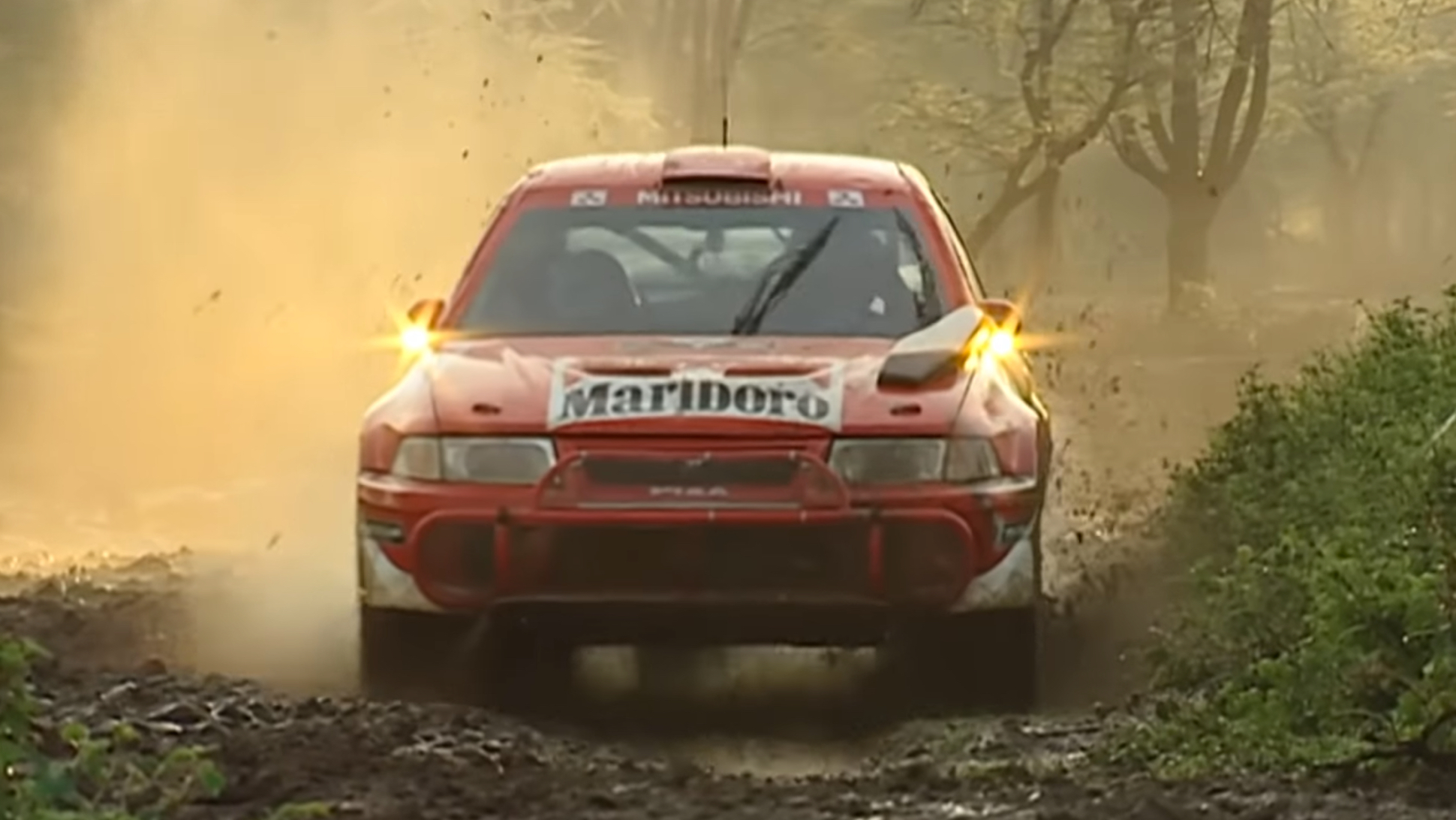

The Safari Rally hasn’t been on the World Rally Championship calendar since 2002, yet the East African classic remains one of the most beloved rounds in rally competition. Racers had to cope with hot, humid and unpredictable weather and some of the roughest roads in the world. It took up to six days to finish and sometimes was over 3,700 miles long. That’s crazy long given that modern WRC events usually only last three days.
While efforts to return the Safari to the WRC calendar haven’t panned out just yet, we can still watch hours of classic WRC cars get thoroughly beaten to smithereens online. And wow, do I mean beaten.

The 1990 Safari Rally was one of the wettest, washing out roads into a lumpy, bumpy mess. Competitors were constantly getting stuck in the thick gooey roads. The Toyota Celica GT-4s, Subaru Legacy RSes, Mitsubishi Galant VR-4s and Lancia Delta Integrales competing that year all have reputations for being ludicrously tough now, yet it was all too easy for these cars to be bested by the Safari Rally’s insane route.
If the widely beloved Mitsubishi Lancer Evolution and Subaru Impreza S7 WRC are more your speed, you may want to tune into the 2001 highlights, which are also up. Legends like Marcus Gronholm, Carlos Sainz and Colin McRae (in a Ford!) all face car-carnage from the rough roads. It had the longest stage of the year, which looked more like one long tricky mud bog.

If you can’t get enough classic rally footage, you can watch the full highlight reels on the WRC+ streaming service. WRC has a full playlist of shorter historic rally clips on YouTube here, which includes gems from ludicrous Group B monsters and other features on important cars, drivers and events. There’s even a jump supercut!
If it’s just too hot or wet outside this holiday weekend where you live, I can’t think of a better way to spend it than watching sick rally jumps.
As for the Safari Rally itself, there is some hope we’ll see it back on the WRC calendar soon. It’s still been running as part of the African Rally Championship in the meantime, but has become a candidate event in 2019 for a possible WRC round, reports the Kenya Broadcasting Corporation. FIA delegates will take a closer look at this year’s event to make sure it’s ready to return to top-level rallying’s calendar. This year’s Safari Rally runs from July 5-7, and current WRC competitor Hyundai will be there during a recce to prepare for a potential 2020 return.